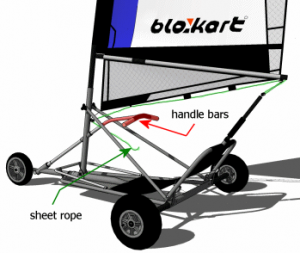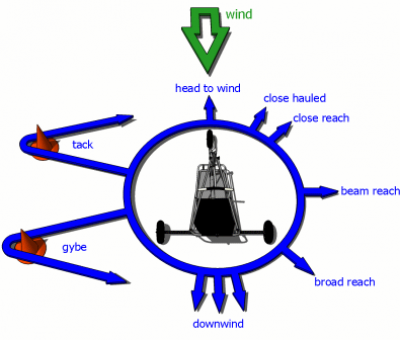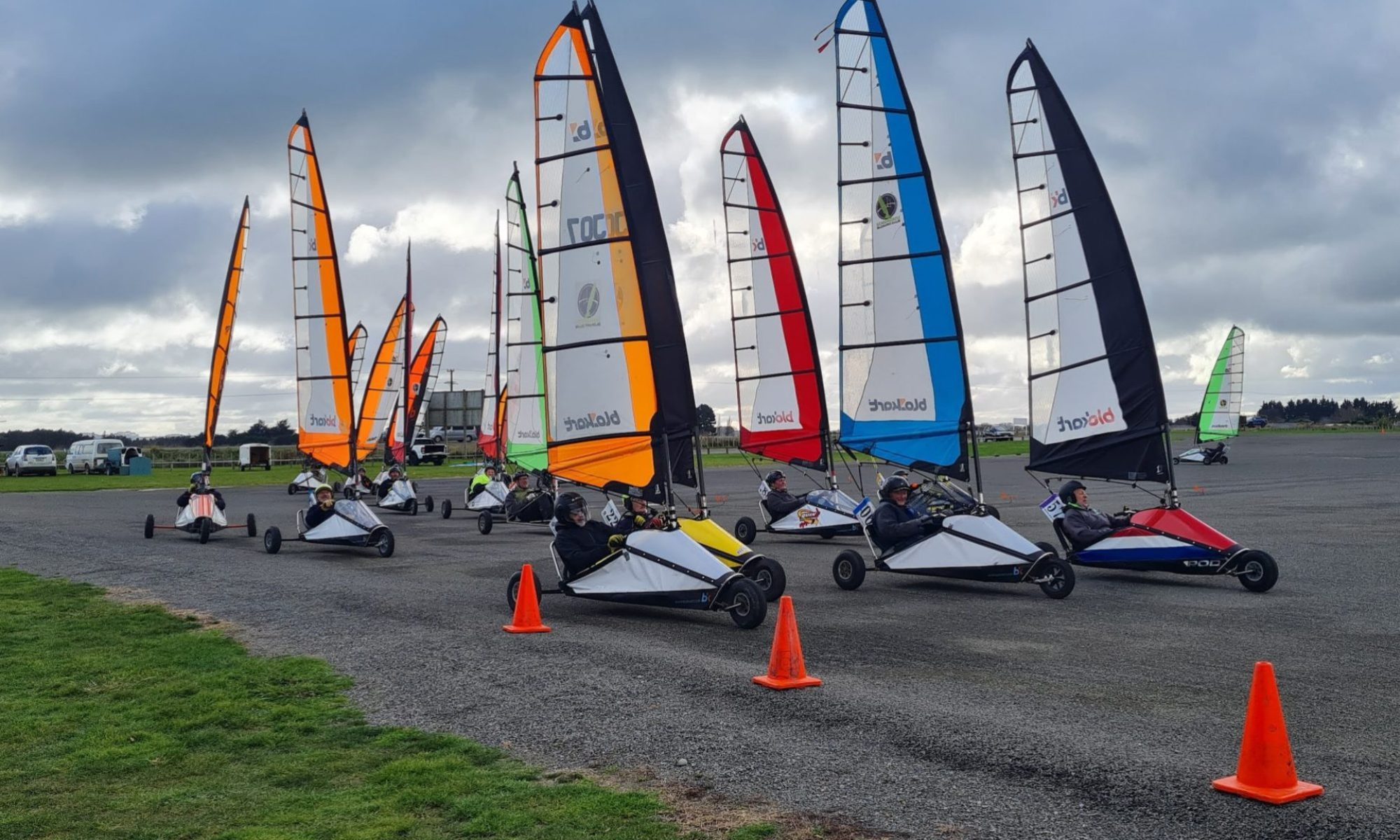recommended skill level for this guide beginner
Hello and welcome to the exciting wind powered world of blokart® sailing. If you are new to blokart® sailing then please study this guide as it contains the information you need to get up and running quickly and safely.
getting started
First of all lets get familiar with how a blokart® works. As you can see in the picture below, a blokart® is basically a 3 wheeled go-kart with a sail.
Just like a sail boat, all of its power comes from the wind. The sail catches the wind blowing from the side and transfers its power into forward motion.

To control a blokart® we use the handle bars to steer the blokart® and the sheet rope to control the angle of the sail. The angle of the sail determines how much wind it will catch and how fast you will go. Generally pulling the sheet rope in will make you go faster and letting it out will make you slow down. However when sailing “downwind” with the wind behind you, letting the sheet rope out can help you catch extra wind.
safety comes first
never leave your blokart® unattended.
always be aware of the current weather conditions. Use flags, trees or even the old wet finger trick to always know where the wind is coming from. Check the forecast and never sail in higher wind strengths than you can handle
always setup and park your blokart® “head to wind” with the front wheel pointing straight into the wind. If it’s windy lay your blokart® on its side.
to move your rigged blokart®, firstly make sure the pulley whip is disconnected from the top of the seat so the sail can swing freely. Then pick up the front wheel and walk your blokart® to where you want to go.
always wear an approved safety helmet and sturdy footwear. Goggles or safety shades and gloves are also recommended.
if in doubt, let it out! Remember your sheet rope is your accelerator pedal. If its too windy and you start raising a wheel into the air, or if you are just simply going too fast simply let out the sheet rope. If it all gets too much, just drop the sheet rope, put both hands on the handlebars and just concentrate on steering to where you want to go.
remember your blokart® doesn’t have a brake pedal. To stop in a hurry simply let go of the sheet rope and steer your blokart® directly into the wind. You can improvise an air brake by pushing the centre of the sail outward into the wind with the palm of your hand. Depending on your speed this could take up to 20 meters so it always pays to try and think ahead.
if you do happen to tip over or “capsize” don’t panic. Keep you hands firmly on the handle bars until you come to a complete stop. (the natural reaction is to put your hands or feet out… DON’T!) Someone will come and roll you back over straight away. If you are alone release your seatbelt (which by now you are very pleased you were wearing), climb out and roll you blokart® back over and do a quick visual check for any damage.
sailing basics
The basic concepts of sailing are covered in the diagram below. When you first sail your blokart® try to travel across
the direction of the wind until you get used to the way your blokart® feels. Getting the most speed out of your blokart® requires fine control of your angle of travel and the correct tension on your sheet rope.

turning
Just like a sail boat, there are two ways of changing direction in a blokart, a tack or a gybe. A very important part of of good blokart sailing is turning at marks of the course without loosing too much speed.
A tack is a turn into the wind. You steer your blokart® toward the direction the wind is coming from, the front wheel passes “head to wind” and the sail sets on the other side. This is the simplest and safest way to turn when first starting out.
A gybe is a turn with the wind behind. You steer your blokart® away from the direction the wind is coming from while slowly letting out the sheet rope. Approximately halfway through the turn the sail will flick to the other side (quite violently in heavy breezes). This is a little trickier to master as just prior to the sail flicking across, the sheet rope needs to be pulled in fast, then released again even faster as soon as the sail flicks across. This reduces the power of the flick which if not done correctly can result in broken pulley whips or mast sections. Not releasing the sheet rope fast enough can lead to a wheel leaving the ground and possible capsize.
Now you’ve read the guide you should try out our demo blokart®

